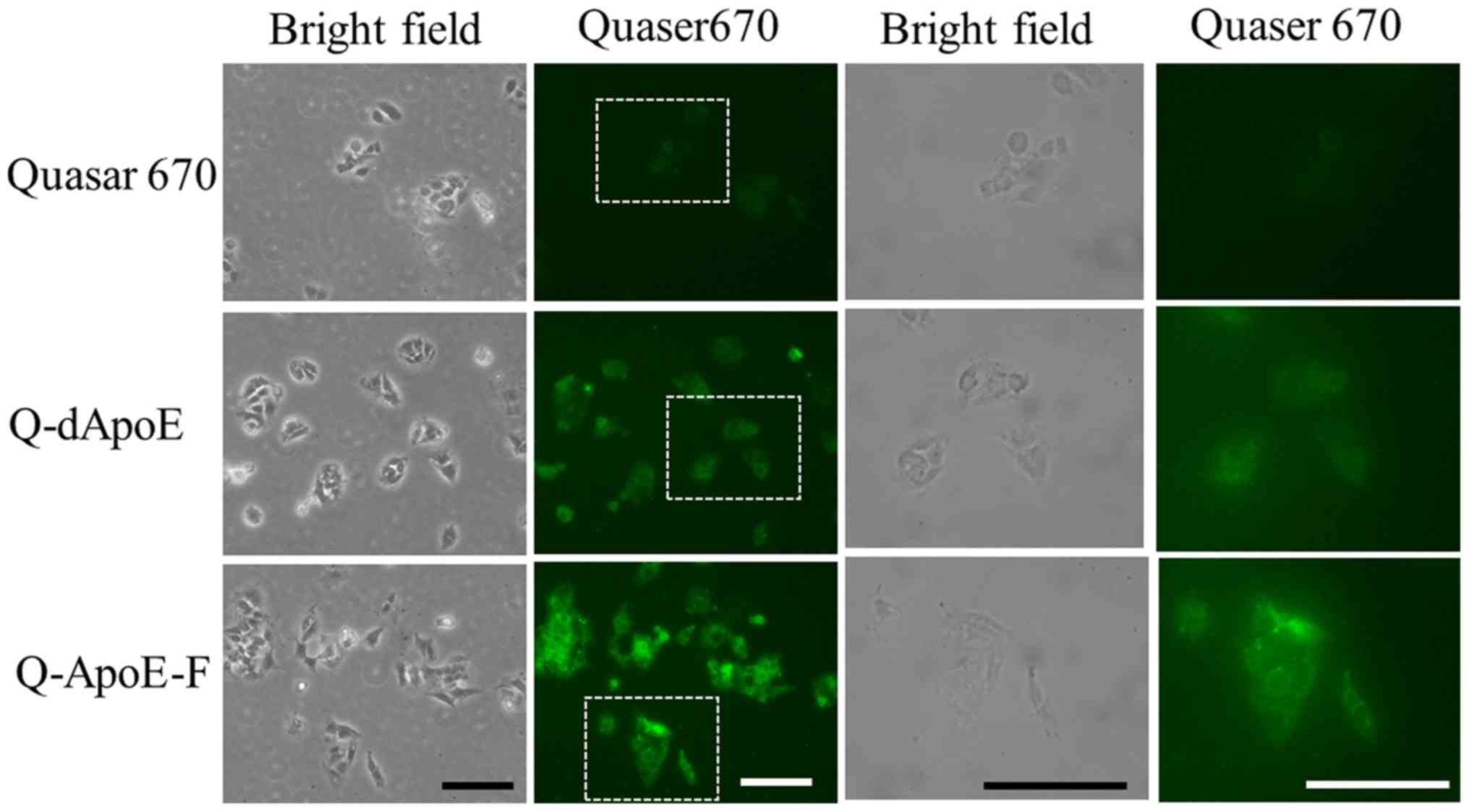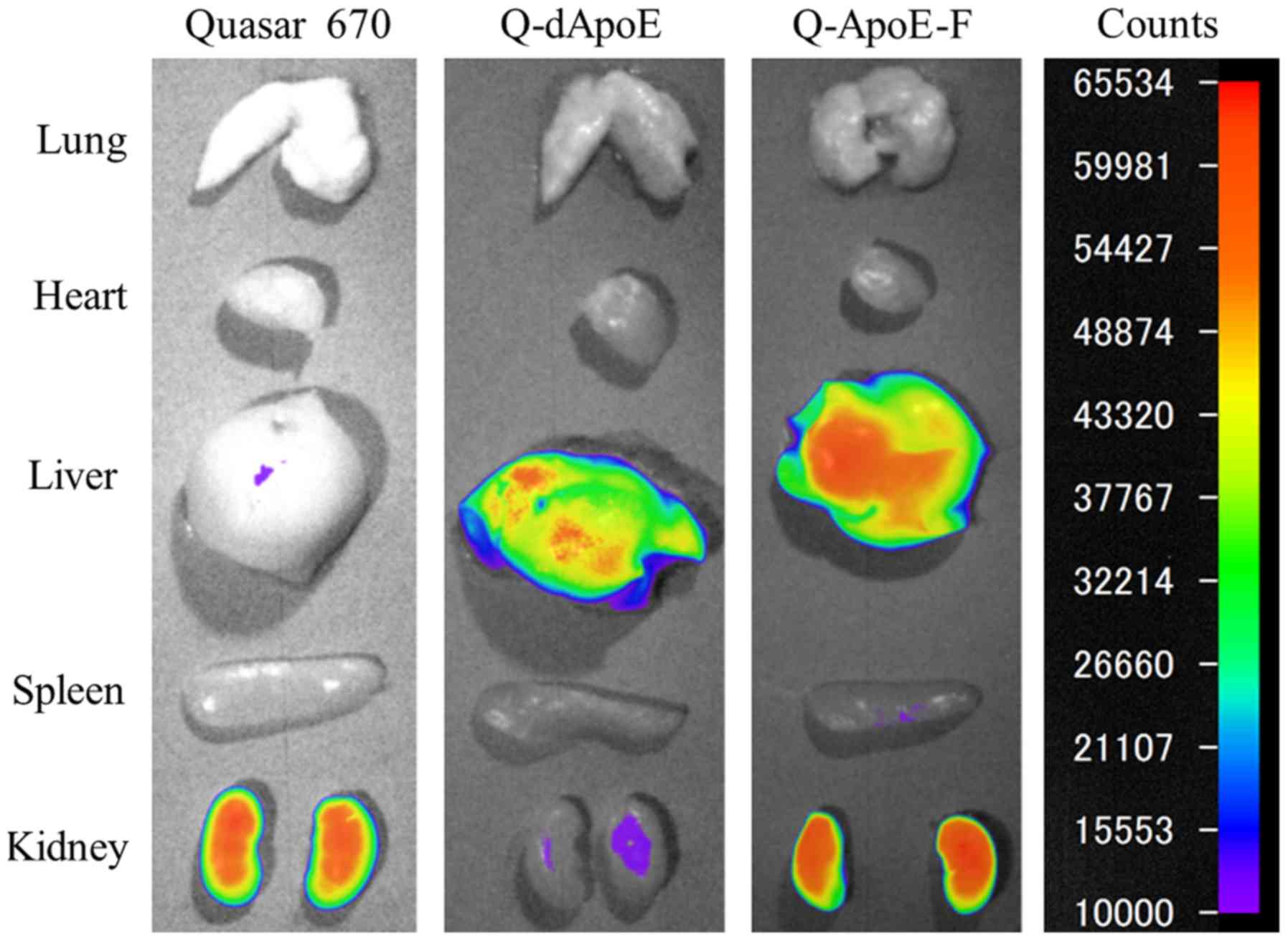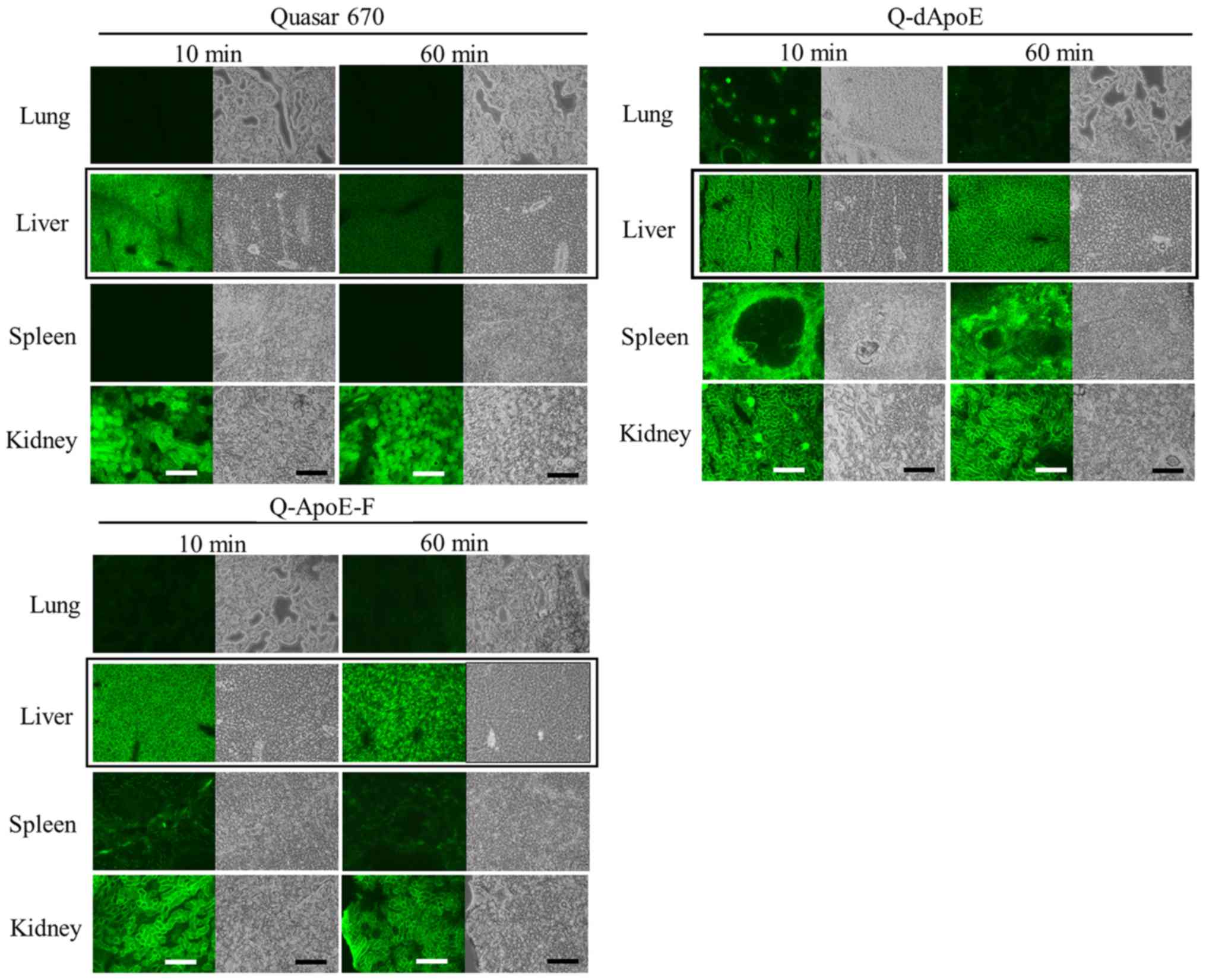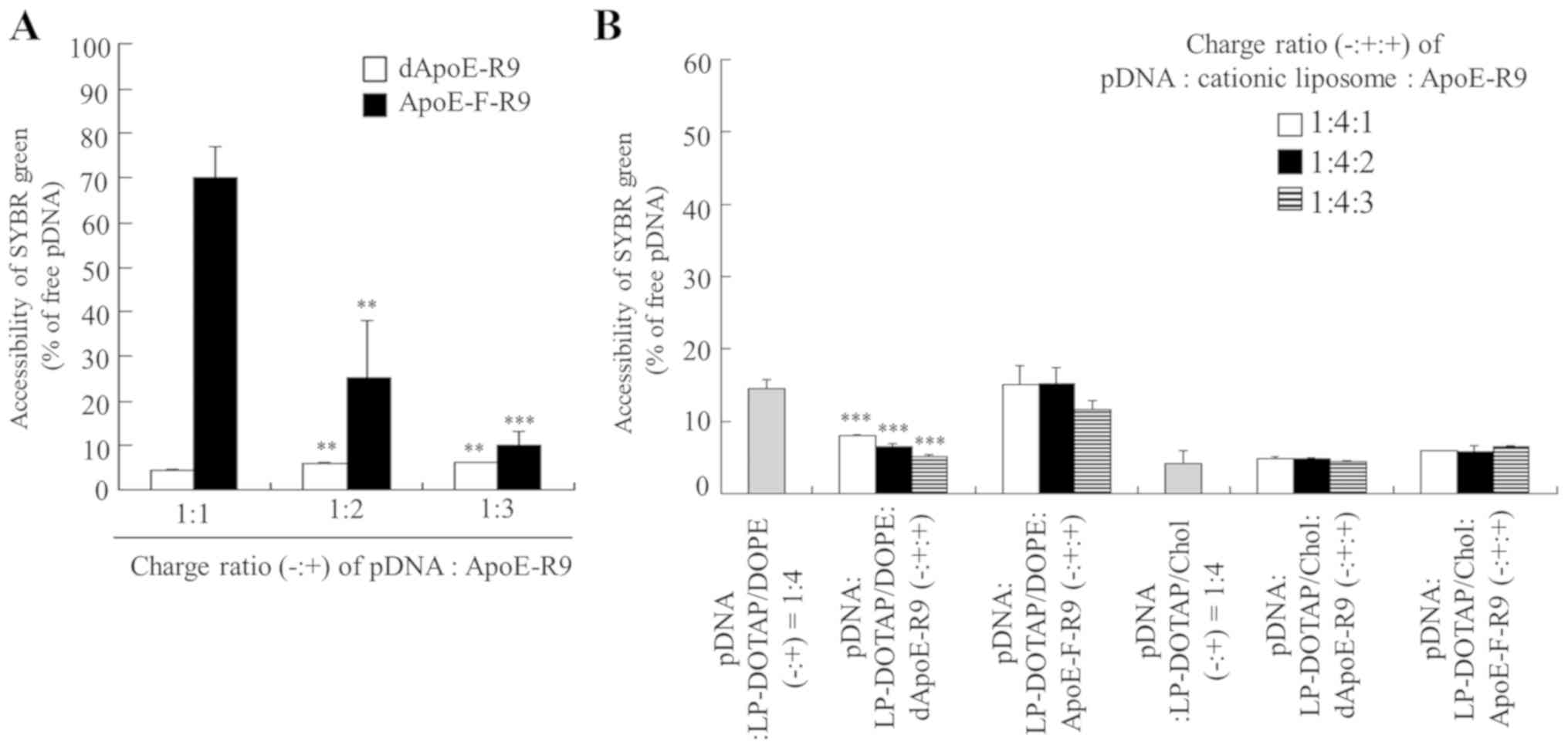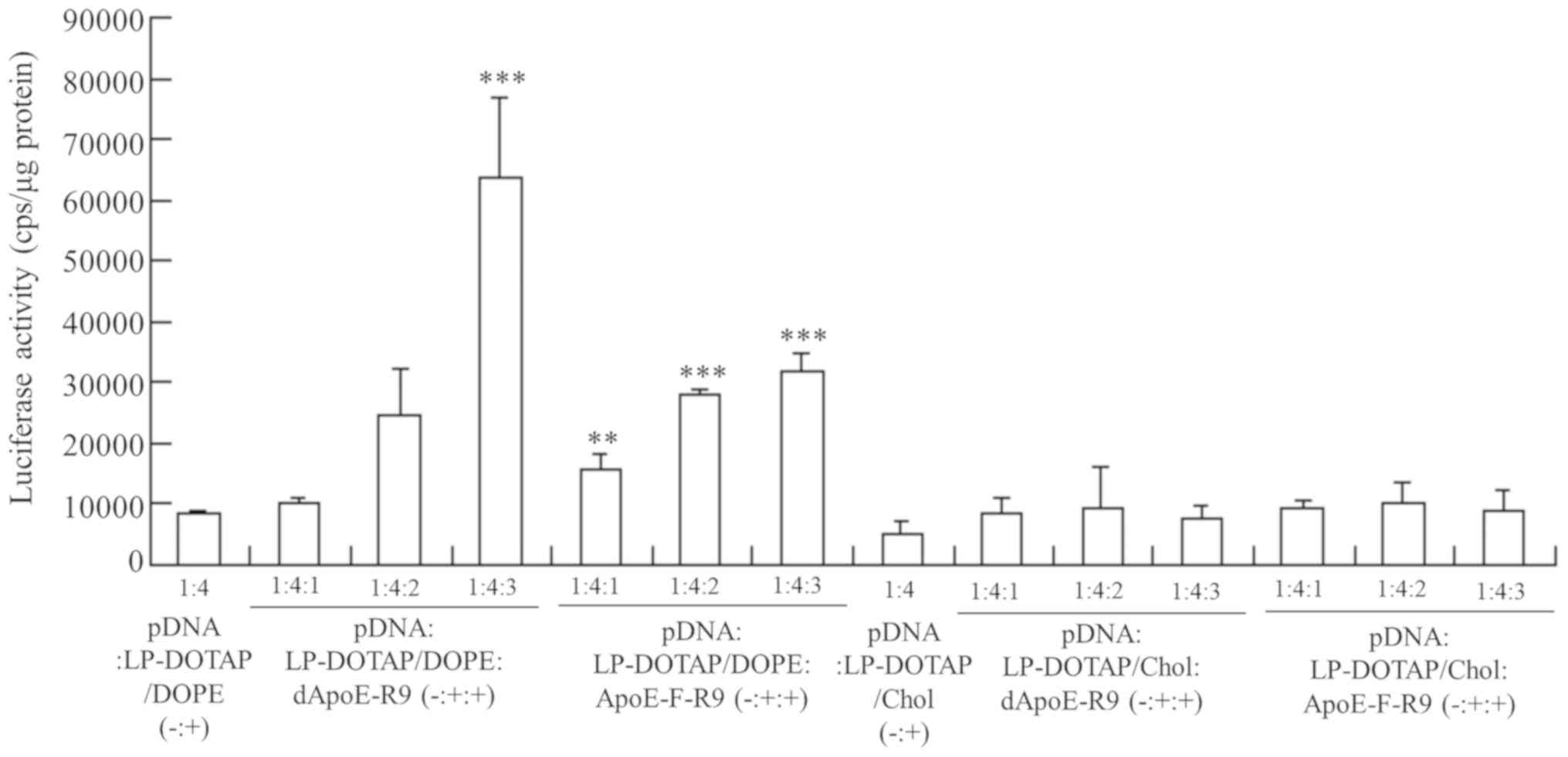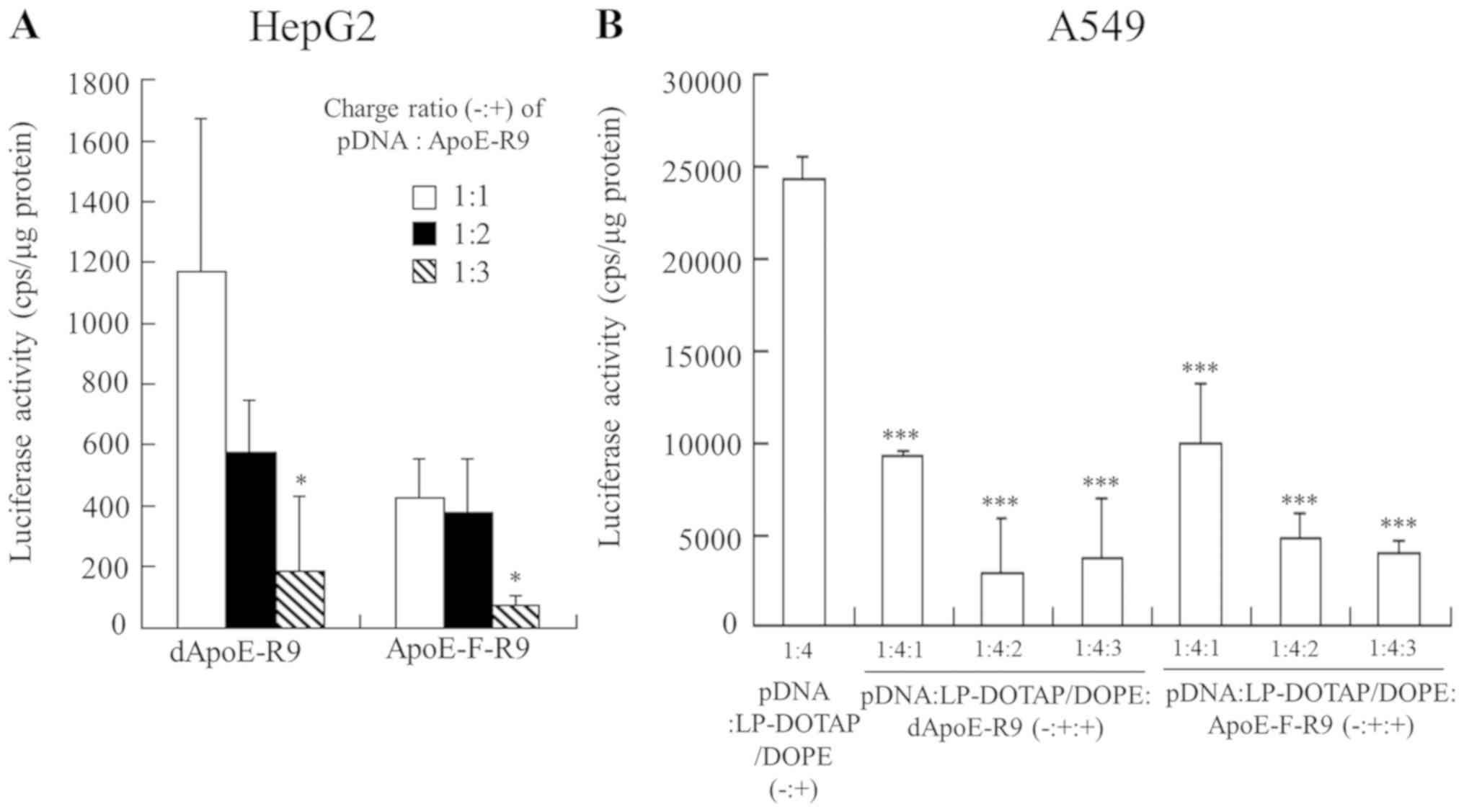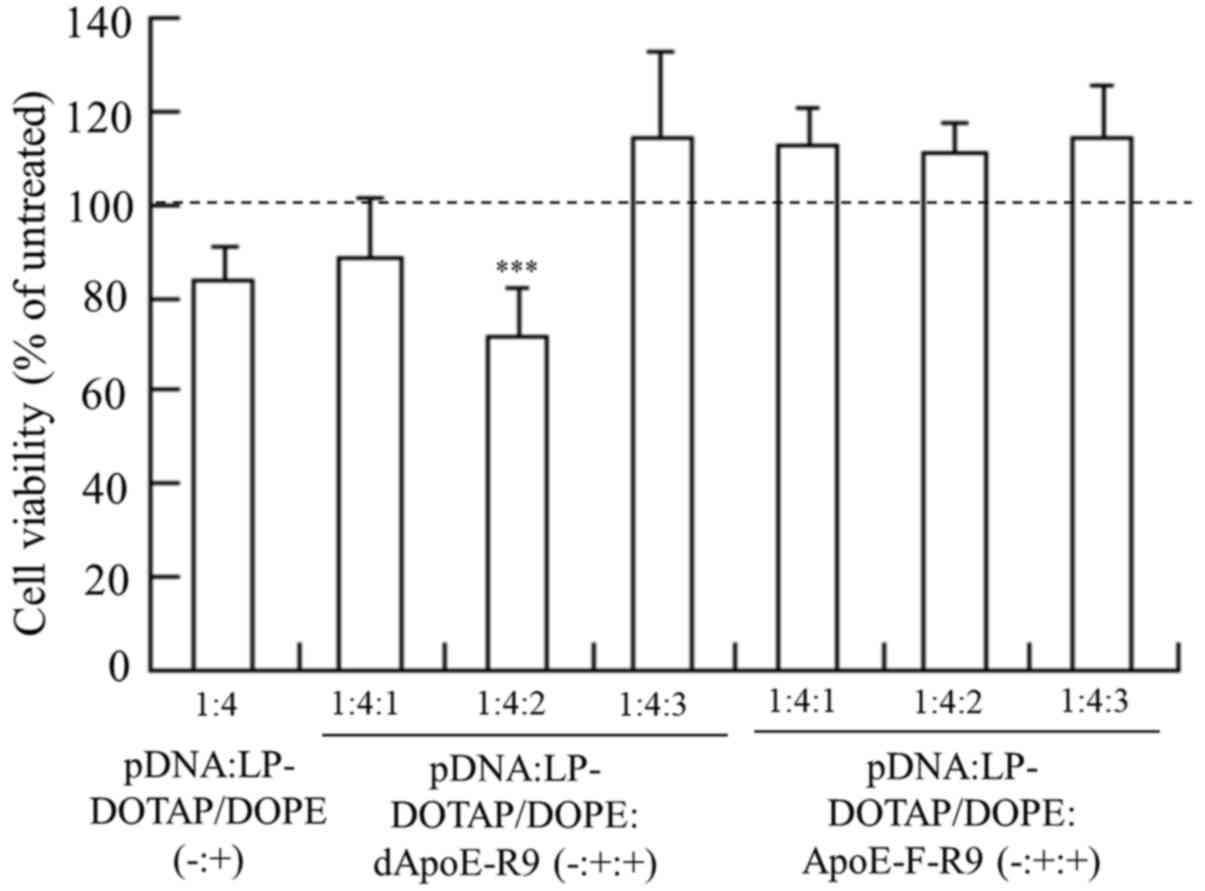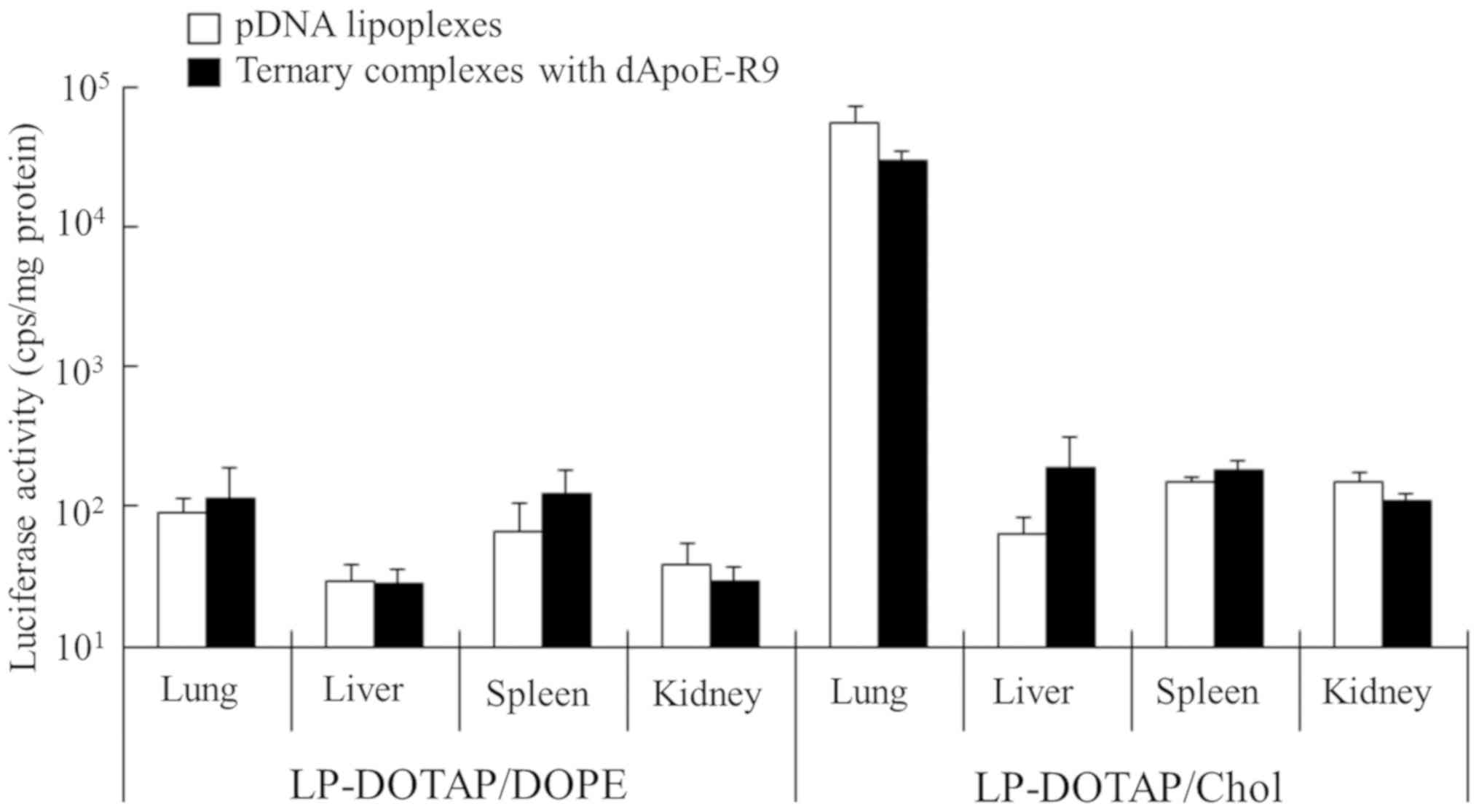|
1
|
Aravalli RN, Belcher JD and Steer CJ:
Liver-targeted gene therapy: Approaches and challenges. Liver
Transpl. 21:718–737. 2015. View
Article : Google Scholar : PubMed/NCBI
|
|
2
|
Wu J, Nantz MH and Zern MA: Targeting
hepatocytes for drug and gene delivery: Emerging novel approaches
and applications. Front Biosci. 7:d717–d725. 2002. View Article : Google Scholar : PubMed/NCBI
|
|
3
|
Nayerossadat N, Maedeh T and Ali PA: Viral
and nonviral delivery systems for gene delivery. Adv Biomed Res.
1:272012. View Article : Google Scholar : PubMed/NCBI
|
|
4
|
Palaschak B, Herzog RW and Markusic DM:
AAV-mediated gene delivery to the liver: Overview of current
technologies and methods. Methods Mol Biol 1950. 333–360. 2019.
View Article : Google Scholar
|
|
5
|
Zhang Y, Bradshaw-Pierce EL, Delille A,
Gustafson DL and Anchordoquy TJ: In vivo comparative study of
lipid/DNA complexes with different in vitro serum stability:
Effects on biodistribution and tumor accumulation. J Pharm Sci.
97:237–250. 2008. View Article : Google Scholar : PubMed/NCBI
|
|
6
|
Lu C, Stewart DJ, Lee JJ, Ji L, Ramesh R,
Jayachandran G, Nunez MI, Wistuba II, Erasmus JJ, Hicks ME, et al:
Phase I clinical trial of systemically administered
TUSC2(FUS1)-nanoparticles mediating functional gene transfer in
humans. PLoS One. 7:e348332012. View Article : Google Scholar : PubMed/NCBI
|
|
7
|
Eliyahu H, Servel N, Domb AJ and Barenholz
Y: Lipoplex-induced hemagglutination: Potential involvement in
intravenous gene delivery. Gene Ther. 9:850–858. 2002. View Article : Google Scholar : PubMed/NCBI
|
|
8
|
Simberg D, Weisman S, Talmon Y, Faerman A,
Shoshani T and Barenholz Y: The role of organ vascularization and
lipoplex-serum initial contact in intravenous murine lipofection. J
Biol Chem. 278:39858–39865. 2003. View Article : Google Scholar : PubMed/NCBI
|
|
9
|
Pathak A, Vyas SP and Gupta KC:
Nano-vectors for efficient liver specific gene transfer. Int J
Nanomedicine. 3:31–49. 2008.PubMed/NCBI
|
|
10
|
Getz GS and Reardon CA: Apoprotein E and
reverse cholesterol transport. Int J Mol Sci. 19:34792018.
View Article : Google Scholar
|
|
11
|
Fazio S, Linton MF and Swift LL: The cell
biology and physiologic relevance of ApoE recycling. Trends
Cardiovasc Med. 10:23–30. 2000. View Article : Google Scholar : PubMed/NCBI
|
|
12
|
Mortimer BC, Beveridge DJ, Martins IJ and
Redgrave TG: Intracellular localization and metabolism of
chylomicron remnants in the livers of low density lipoprotein
receptor-deficient mice and apoE-deficient mice. Evidence for slow
metabolism via an alternative apoE-dependent pathway. J Biol Chem.
270:28767–28776. 1995. View Article : Google Scholar : PubMed/NCBI
|
|
13
|
Rensen PC, Schiffelers RM, Versluis AJ,
Bijsterbosch MK, Van Kuijk-Meuwissen ME and Van Berkel TJ: Human
recombinant apolipoprotein E-enriched liposomes can mimic
low-density lipoproteins as carriers for the site-specific delivery
of antitumor agents. Mol Pharmacol. 52:445–455. 1997. View Article : Google Scholar : PubMed/NCBI
|
|
14
|
Yan X, Kuipers F, Havekes LM, Havinga R,
Dontje B, Poelstra K, Scherphof GL and Kamps JA: The role of
apolipoprotein E in the elimination of liposomes from blood by
hepatocytes in the mouse. Biochem Biophys Res Commun. 328:57–62.
2005. View Article : Google Scholar : PubMed/NCBI
|
|
15
|
Tamaru M, Akita H, Nakatani T, Kajimoto K,
Sato Y, Hatakeyama H and Harashima H: Application of apolipoprotein
E-modified liposomal nanoparticles as a carrier for delivering DNA
and nucleic acid in the brain. Int J Nanomedicine. 9:4267–4276.
2014.PubMed/NCBI
|
|
16
|
Re F, Cambianica I, Zona C, Sesana S,
Gregori M, Rigolio R, La Ferla B, Nicotra F, Forloni G, Cagnotto A,
et al: Functionalization of liposomes with ApoE-derived peptides at
different density affects cellular uptake and drug transport across
a blood-brain barrier model. Nanomedicine. 7:551–559. 2011.
View Article : Google Scholar : PubMed/NCBI
|
|
17
|
Sauer I, Dunay IR, Weisgraber K, Bienert M
and Dathe M: An apolipoprotein E-derived peptide mediates uptake of
sterically stabilized liposomes into brain capillary endothelial
cells. Biochemistry. 44:2021–2029. 2005. View Article : Google Scholar : PubMed/NCBI
|
|
18
|
Hülsermann U, Hoffmann MM, Massing U and
Fricker G: Uptake of apolipoprotein E fragment coupled liposomes by
cultured brain microvessel endothelial cells and intact brain
capillaries. J Drug Target. 17:610–618. 2009. View Article : Google Scholar : PubMed/NCBI
|
|
19
|
Igarashi S, Hattori Y and Maitani Y:
Biosurfactant MEL-A enhances cellular association and gene
transfection by cationic liposome. J Control Release. 112:362–368.
2006. View Article : Google Scholar : PubMed/NCBI
|
|
20
|
Kato M, Hattori Y, Kubo M and Maitani Y:
Collagenase-1 injection improved tumor distribution and gene
expression of cationic lipoplex. Int J Pharm. 423:428–434. 2012.
View Article : Google Scholar : PubMed/NCBI
|
|
21
|
Hattori Y, Yamasaku H and Maitani Y:
Anionic polymer-coated lipoplex for safe gene delivery into tumor
by systemic injection. J Drug Target. 21:639–647. 2013. View Article : Google Scholar : PubMed/NCBI
|
|
22
|
Hattori Y and Maitani Y: Folate-linked
nanoparticle-mediated suicide gene therapy in human prostate cancer
and nasopharyngeal cancer with herpes simplex virus thymidine
kinase. Cancer Gene Ther. 12:796–809. 2005. View Article : Google Scholar : PubMed/NCBI
|
|
23
|
Li S, Tseng WC, Stolz DB, Wu SP, Watkins
SC and Huang L: Dynamic changes in the characteristics of cationic
lipidic vectors after exposure to mouse serum: Implications for
intravenous lipofection. Gene Ther. 6:585–594. 1999. View Article : Google Scholar : PubMed/NCBI
|
|
24
|
Martin B, Sainlos M, Aissaoui A, Oudrhiri
N, Hauchecorne M, Vigneron JP, Lehn JM and Lehn P: The design of
cationic lipids for gene delivery. Curr Pharm Des. 11:375–394.
2005. View Article : Google Scholar : PubMed/NCBI
|
|
25
|
Yeeprae W, Kawakami S, Suzuki S, Yamashita
F and Hashida M: Physicochemical and pharmacokinetic
characteristics of cationic liposomes. Pharmazie. 61:102–105.
2006.PubMed/NCBI
|
|
26
|
Sakurai F, Nishioka T, Saito H, Baba T,
Okuda A, Matsumoto O, Taga T, Yamashita F, Takakura Y and Hashida
M: Interaction between DNA-cationic liposome complexes and
erythrocytes is an important factor in systemic gene transfer via
the intravenous route in mice: The role of the neutral helper
lipid. Gene Ther. 8:677–686. 2001. View Article : Google Scholar : PubMed/NCBI
|
|
27
|
Hong K, Zheng W, Baker A and
Papahadjopoulos D: Stabilization of cationic liposome-plasmid DNA
complexes by polyamines and poly(ethylene glycol)-phospholipid
conjugates for efficient in vivo gene delivery. FEBS Lett.
400:233–237. 1997. View Article : Google Scholar : PubMed/NCBI
|
|
28
|
Du Z, Munye MM, Tagalakis AD, Manunta MD
and Hart SL: The role of the helper lipid on the DNA transfection
efficiency of lipopolyplex formulations. Sci Rep. 4:71072014.
View Article : Google Scholar : PubMed/NCBI
|
|
29
|
Kim BK, Hwang GB, Seu YB, Choi JS, Jin KS
and Doh KO: DOTAP/DOPE ratio and cell type determine transfection
efficiency with DOTAP-liposomes. Biochim Biophys Acta 1848.
1996–2001. 2015.
|















